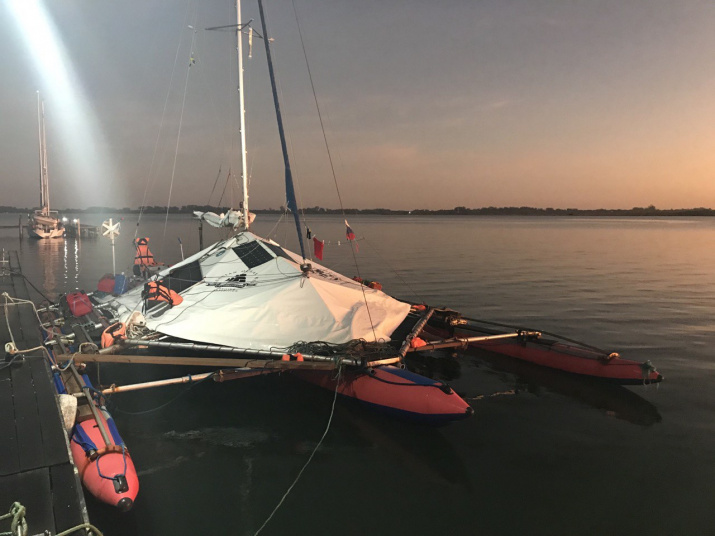Днём 23 мая тримаран Russian Ocean Way кругосветной экспедиции Томского областного отделения Русского географического общества оставил за кормой гостеприимный бразильский берег. Судно вышло из порта Риу-Гранди и взяло курс на Уругвай. Путешествие вдоль побережья Бразилии длилось четыре месяца.
«Рио Гранди, где мы стояли в Музее океанографии, стал последним городом Бразилии , вдоль берегов которой мы шли 4 месяца.Огромная прекрасная страна, открытый дружелюбный народ, хорошие условия для жизни. Мы идём в Уругвай и вскоре пересечём морскую границу Бразилии и Уругвая«, — отметил в своём путевом дневнике руководитель экспедиции Евгений Ковалевский.
В этом переходе интернациональный экипаж тримарана пополнили два бразильца. К россиянам Евгению Ковалевскому и Станиславу Берёзкину присоединились Хосе Карлос Фильо и Леннон Сезар. «Дружба народов — приоритетная миссия нашей экспедиции наряду с образовательными и научными программами«, — напомнил Ковалевский.
По его словам, с историей о русской кругосветной экспедиции на надувном парусном тримаране теперь знакомы едва ли не все жители города Риу-Гранди с населением около 200 тысяч человек. И это плоды «народной дипломатии», частью которой является и интернациональный формат экипажа. Прохожие останавливали россиян, увидев их на улицах, задавали массу вопросов о путешествии, России и Сибири, приходили на экскурсии на тримаран. Ярким примером такого общения стала встреча со студентами Центра морских наук Федерального университета штата Рио-Гранди-ду-Сул.
Во время финальной стоянки в Бразилии экипаж кругосветки принял участие в очередном, уже пятом по счёту, «Уроке из океана», организованном для школьников в прямом эфире Томским областным отделением Русского географического общества. Евгений Ковалевский и Станислав Берёзкин рассказали о вкладе русских мореплавателей в открытие мира и провели виртуальную экскурсию по следам Беллинсгаузена, Крузенштерна и Головнина, подготовленную в ходе посещения Рио-де-Жанейро.
Перед стартом первого «уругвайского» этапа экспедиции пришлось в буквальном смысле ждать у моря погоды — сейчас в регионе довольно часты шторма и циклоны.
— Сегодня ночью ветер был до 35 узлов. Следующая ночь — 50 узлов. Мы растянули тримаран с двух сторон верёвками. Рядом две яхты прыгают на ветру и на волнах, — поделился ощущениями с редактором сайта РГО 17 мая Евгений Ковалевский.
Погода позволила выйти в море 23 мая, «открыв окно» для плавания на пару дней.
— Идём двое суток до Ла-Паломы в Уругвае. Надо успеть до шторма, который через два дня. Движемся на юго-запад. Впереди — Пунте-дель-Дьябло, мыс Дьявола. Название настораживает, и по карте видно вдоль берега на дне останки затонувших кораблей. Видимо, неспроста. Пока связь есть, но через какое-то время пропадёт, — отметил поздним вечером 23 мая Евгений Ковалевский.
Экипаж Russian Ocean Way выражает огромную сердечную благодарность Музею океанографии Риу-Гранди и лично директору Музея Lauro Barcelos за неоценимую помощь в Риу-Гранди.
Будем ждать новостей от отважных кругосветчиков и пожелаем им попутного ветра!
Александр Жирнов



























